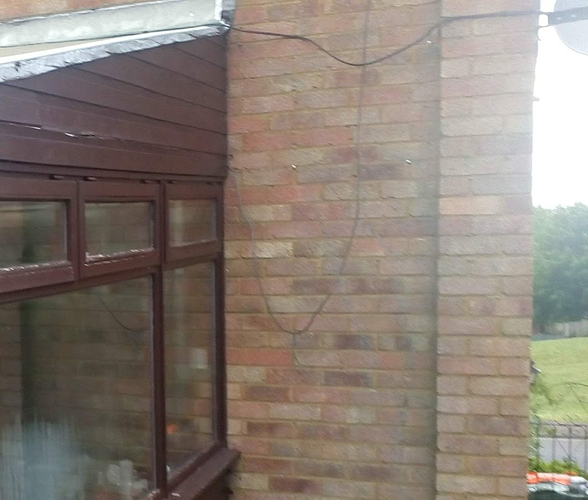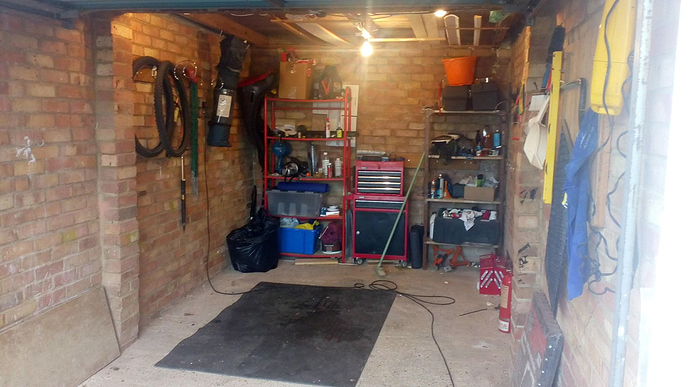I’m getting a new conservatory put up, and the first job was to isolate the electrics to the old one before its taken down.
The complication is whoever put it up bodged it. Power is supplied by a feed taken from under the roof tiles, via a round cable (internal type) dangling in mid air. An electrician came round, but its a mystery how this was done. We can’t access the loft; its only about 2 foot tall. The feed is taken off the ring circuit, and the wiring in the house is “rising”. Checking every plug upstairs doesn’t find a the same wire type in the back of a plug, though it revealed a few plugs wired up by someone working from a Readers Digest DIY manual; burnt cabled due to cheap plugs, or under tightened wires…
Because the wrong cabling was used, the electrician can’t put it in a waterproof junction box and leave it on the roof; the outersheaf is pretty rubbery feeling.
The only options are to get a scafolding tour and lift a few tiles, or cut a hole in the bedtoom ceiling. But the ceiling is artexed. Its a mid-70s house. Although the artex looks fairly new, were not sure if its original, and possibly containing white asbestos (lower risk than blue asbestos, but still a risk). So the electrician suggested I mask up and cut a hole myself, then he’ll come in and make good the electrics, and the conservatory builders will patch my ceiling.
Not having cut a hole in a ceiling before, I’m wondering about the right approach. Evacuate the room of all soft furnishings. Laydown a dust sheet. Shaving foam can apparently reduce dust generation.
I was thinking about a mini disc saw (usable upsde dwn?), rather than reciprocating saw, as I can set the depth. Or better off with a plaster saw, With limited access to the loft, I am guessing where the joists are. The plan would be to mark where I want to cut, damp down the area to be cut, drill at the corners to give me some indication if I am hitting wood, then cut the sheet out. Can I seal the edges with lacquar? I used hairspray to lacquer hepa filters being changed in a lab that ere contaminated with some pretty bad biological toxins. I’ll then just tack some sheeting over the hole to minimise further loft crap falling into the room.
Does this sound like a fair plan, or run away…
The cable in question; it seems an idiotic way to wire up a conservatory, plus illegal. Needless to say, the surveyors never mentioned this when I brought the house.




